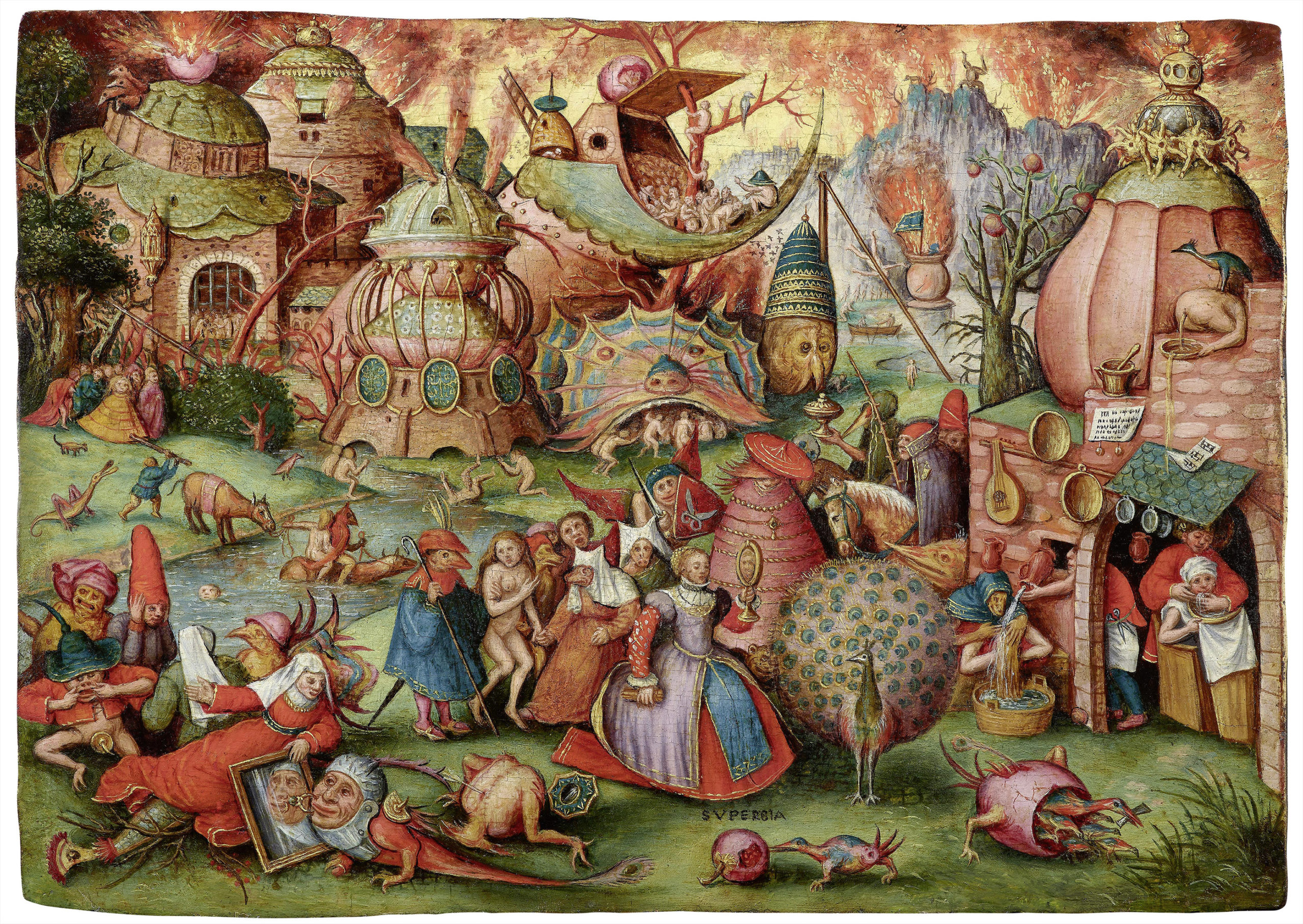
Jan Mandijn
Biography
ContextJan Mandijn was born in Haarlem in 1502 and settled in Antwerp in 1530. He quickly made a reputation for himself there through his portrayals of scenes such as the Temptation of St. Anthony and St. Christopher. For these works, he drew largely on the fantastic creatures of Hieronymus Bosch, just like the artist Pieter Huys. However, in his amusing rather than truly disturbing paintings, there is no indication of the fearful background that characterised the master from Den Bosch. In an equally characteristic manner, he distinguished himself through the heightened realism of his landscapes, often painted with a supple, broad brushstroke.
The special ties he maintained with Pieter Aertsen, and with his apprentice portrait painters such as Jan Mostaert and Bartholomeus Spranger, lead us to believe that the painter’s work wasn't confined to the fantastic with which his name is systematically associated. As a result, several art historians have been all too quick to attribute works considered to be by the Master of the Prodigal Son to Jan Mandijn. More recently, a link was suggested with the mysterious figure of the Master of Paul and Barnabus. Although it is still difficult to reach a decision on this subject, Mandijn certainly enjoyed considerable esteem and public recognition during his lifetime, thus exceeding the commonly-attributed profile of a mere imitator of Bosch. This is proved by the annual allowance he received from the City of Antwerp for his work as a decorator for the annual Ommegang.


